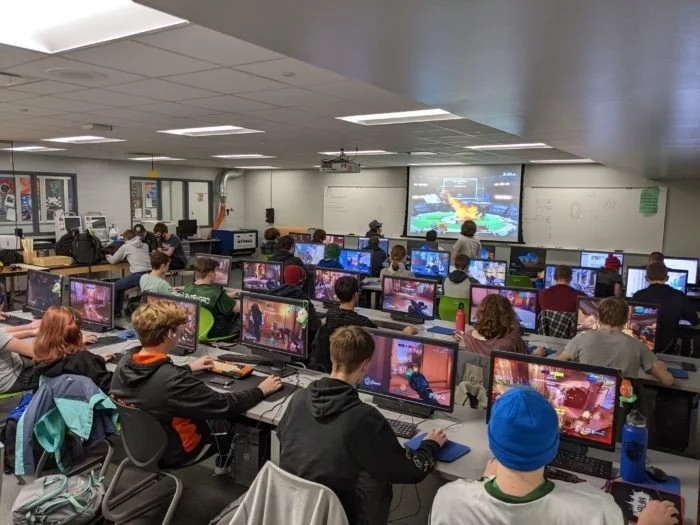The Art of In-Class Gaming
Ever since computers were introduced into Moeller’s classrooms, students have found creative ways to do everything except schoolwork. That’s just the reality of having internet access at your fingertips. Over the years, in-class gaming has evolved—from full-class Halo matches to stealthy solo browser games—and it’s become a unique part of student life. But what games are students playing today, and where did it all begin?
Moeller first introduced classroom computers in the 1990s, and students quickly discovered how to sneak games onto them. Before MoeCampus existed, teachers used something called the X-Drive—a shared folder where students could submit assignments. Some teachers rarely checked it, which gave students the perfect opportunity to upload games and share them with others. This marked the beginning of gaming during school hours.
Naturally, Moeller staff tried to crack down on this, but with limited success. Monitoring hundreds of students was no easy task. Every time one loophole was closed, five more popped up. As video games exploded in popularity in the early 2000s, students got even more creative. Games were loaded onto flash drives or downloaded at home and transferred to school computers.
This era gave rise to the golden age of Moeller gaming. Students would jump into multiplayer games like Halo, sometimes with the entire class playing together. It was chaotic, fun, and—let’s be honest—probably not great for learning. Even the help desk joined in, sometimes killing students in-game and triggering the message: “You have been killed by the help desk.” Teachers could also use monitoring software to temporarily take control of a student’s computer mid-game, just to mess with them. It was a strange but entertaining dynamic—students had fun, and staff had fun messing with them. Of course, it was frustrating for teachers trying to run a serious class, but at least everyone had a good time.
Eventually, Moeller cracked down, and the days of mass Halo matches came to an end. By around 2013, gaming had shifted. With restrictions on installing games and improvements in internet access, students turned to browser-based games. Moeller anticipated this and implemented network restrictions and monitoring software to block gaming sites. They also introduced programs that allowed teachers to see what students were doing on their screens in real time.
To get around these new barriers, students began using clever tactics—preloading games on outside networks, cutting Wi-Fi to avoid detection, and installing browser extensions at home to use offline at school.
Fast forward to 2025, and Moeller has adopted a new monitoring system: Securly. It’s effective—maybe too effective. Securly tracks which sites students visit, how long they stay on them, and automatically blocks anything not deemed essential for school. While it’s great for preventing gaming, it can also block legitimate research sites, making learning more difficult. Still, from a gaming prevention standpoint, Moeller is in a solid place. Of course, students still find ways around it—like downloading extensions at home to use offline during school hours.
Gaming has been part of Moeller’s tech culture since the first classroom computer booted up. From full-class gaming sessions to today’s stealthy solo play, students have always found ways to bend the rules. This article isn’t meant to promote wasting class time—it’s meant to reflect on the history of gaming and technology at Moeller, and how it continues to evolve.
While gaming can be a fun and creative use of technology, it’s important to remember the purpose of school-issued computers. The best way to use them is, surprisingly, for school. But the legacy of in-class gaming at Moeller? That’s a story worth telling.

